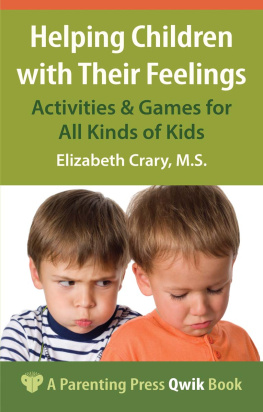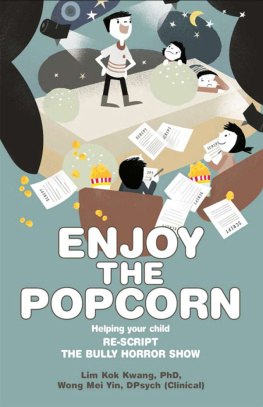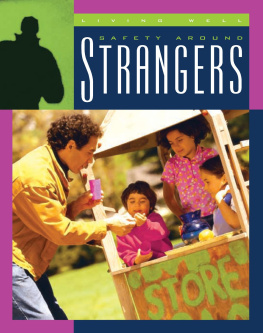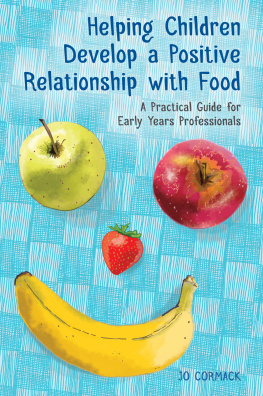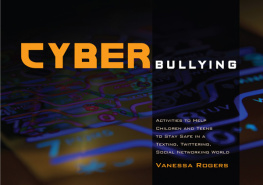Foreword
My favorite color is red, the small five-year-old confidently stated, his deep chestnut eyes smiling.
Whew. This sweet child was opening up to me as we chatted face-to-face in overstuffed blue chairs. One brother and two sisters before him had started to feel comfortable and safe in the same chair into which this tiny boy was now settling. They shared their favorite games, classes in school, music and morebut each stopped in their tracks when I transitioned the conversation to inquire, Are you worried about your mum?
Countless child forensic interviews have left me scratching my head, wondering how someone could ever put a child through such atrocities. There are a few interviews, though, that haunt me to this day. This was one of them.
Earlier that day, the four children had witnessed their mothers rape and attempted strangulation at the hands of her boyfriend. The police responded, took statements, arrested the boyfriend and brought the mother and children to the communitys child advocacy center so the traumatised kids could participate in forensic interviews to better determine what they had witnessed.
I asked the tiny boy about his mother his lips tightened as his large eyes overflowed. Handing him a tissue, I knew we were done. He would disclose nothing to me that nightor ever. Sometime that afternoon, his mother decided she didnt want to press charges against her boyfriend. She had also convinced each of her children they would be taken from her and placed in separate foster homes if they disclosed anything about the incident earlier that dayand who knows? Or, perhaps about other violent incidents they had either witnessed or experienced themselves.
The very next day, the mother packed their belongings and followed her abusive boyfriend out-of-state with her vulnerable children in tow. This case haunts me as I will never know if those children are safe. I can only hope their mother eventually found the strength and courage to escape an abusive situation in which far too many families find themselves trapped. Tragically, its the children who ultimately pay the price.
Child forensic interviews and investigations into allegations of child abuse are only the beginning for victims. The real work of healing a child and his or her family comes as they participate in therapy and mend both surface wounds, as well as ones that are deeply rooted, and they develop the skills they need to ask for help when they need it and to keep safe in the future.
The global epidemic of child maltreatment assumes many forms. Children around the world are abused in both vicious and subtle manners ranging from sexual or physical abuse, to neglect, to psychological abuse; sadly, polyvictimisation is common among maltreated children. In the world of child abuse investigations and child forensic interviewing, there is a well-known fact:
Disclosure is a process, not a one-time event.
As is the case with abuse itself, disclosure can also take on many forms. It is common for children to test the waters and share partial disclosures to assess how a person with whom the child is placing his or her trust will respond. Will the disclosure be met with doubt or hostilityor will it be received with immediate acceptance and reassurance? The manner in which a disclosure is received can literally make or break a childs decision to ever talk about the abuse again. The latter can lead to tragic consequences including further victimisation of the child, and possibly of others, as well as future mental or physical health problems such as self-injurious behavior, anxiety, depression, obesity and even suicide.
Disclosure can also assume the form of sudden outbursts or can be seen in a childs behavior and activity or even lack thereof disclosure doesnt always present itself in the form of words or language one can readily comprehend. Herein lies the challenge for workers supporting vulnerable children and young people. The journeys of disclosure and healing for child abuse survivors are different for everyone; however, they do share some common traits.
In this book, Helping Vulnerable Children and Adolescents to Stay Safe , Katie Wrench affirms that the journeys of disclosure, healing and keeping safe are just that journeys. Survivors dont complete their voyage in a single step, but rather travel a daunting, arduous path often filled with hazards and danger. That path, though, can be smoothed with respect, encouragement and a learned ability to self-protect. Thats where you come in.
Katie outlines exercises and creative ideas that align with practices employed in child forensic interviewing protocol and basic body safety education methodology. Maintaining a Child First philosophy whereby the childs needs are paramount, this book underscores the importance of rebuilding (or in some cases, constructing for the first time) a child victims self-esteem, resilience and sense of safety as an integral part of the therapeutic process.
Utilising secrets, seizing moments of vulnerability or opportunity, and grooming targeted victims are common modus operandi of abusers and sexual predators. Katie presents methods to combat child maltreatment by helping the child build a sense of self, level of confidence and general understanding of personal boundaries and rightsall outcomes professionals involved in safeguarding vulnerable children hope to see.
As a child advocate, I applaud Katie for sharing valuable insight and tactical advice for social workers, therapists and counselors who are accompanying child survivors of abuse on their journeys. I also hope that these creative techniques will support workers to empower vulnerable children and adolescents to avoid repeat victimisation. I also thank YOU, the reader, for your commitment to strengthen and evolve your own professional methods and techniques to help children safely navigate and explore their own uncharted journeys of feeling safe, disclosure and healing.
Ginger Kadlec
Founder, BeAKidsHero ( http://www.beakidshero.com )
Creator of the Sexual Abuse Prevention System
( http://sexualabusepreventionsystem.com )
Indianapolis, Indiana, USA
As a therapeutic social worker and art psychotherapist working with vulnerable children and young people, their parents and carers, I am often asked for advice and resources to support the development of protective behaviours and an understanding of how to help children keep safe. In recent years there have been various programmes aimed at promoting childrens safety and protection from sexual abuse, such as the UK child protection charity National Society for the Prevention of Cruelty to Children (NSPCC) campaign promoting The underwear rule (NSPCC no date).
The NSPCC encourages us to talk about PANTS:
P rivates are private.
A lways remember your body belongs to you.
N o means no.
T alk about secrets that upset you.
S peak up, someone can help.
For the mainstream population of children, these are such valuable lessons. However, in my experience, for children who have already been victimised or who, for diverse reasons, may be vulnerable to victimisation, the issues are more complex. But what if you have been threatened with death if you speak up? What if you spoke up and were not believed? What if you said no and were repeatedly abused anyway? What if you cant remember the last time your privates were private? What if countless adults have used your body for entertainment or pleasure? What if you dont know whether a secret feels good or bad?



